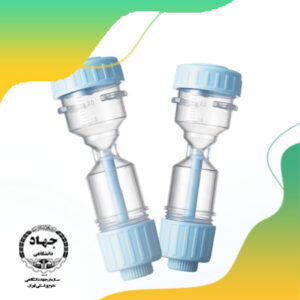The thermal expansion formula for linear thermal expansion is given by the following: L= LT L = L T. In the above equation, L L is the original length of the material, L L is . Heating causes atoms in the metal to vibrate more, and these vibrations cause the metal to expand. The weld thermal cycle produces a differently featured heat-affected zone (HAZ), associated by microstructural changes in the material microstructure, and these changes can drastically change the acceptance of the welding joint such as meeting hardness for NACE in carbon & low alloy steel or fulfilling the phases requirements for duplex stainless steel welding. Coefficient of thermal expansion must be considered in components that use a mixture of materials such as heat exchangers with mild steel shells and austenitic grade tubes. These applications will - due to browser restrictions - send data between your browser and our server. The answer to this question is not as straightforward as one might think. Thermal expansion is the increase, or decrease, of the size (length, area, or volume) of a body due to a change in temperature. Do you need to convert any type of pressure unit? Steel expands when it is heated at the rate of 6 millionths of an inch per inch per degree of heat rise. If I had a traditional wood frame house, say 25' x 35' how many inches would it shrink and grow from -10F to 100 F? Some substances simply expand more easily than others. For liquids, only volumetric expansion has physical meaning: Ethanol: 75 10-5 K-1; Sketch at page top and accompanying text are reprinted/adapted/excerpted with permission from Solar Age Magazine - editor Steven Bliss. aluminum, steel, bronze, iron, brass, copper, gold, silver, invar, I am trying to figure out HOW I can capture these sounds as evidence of what is happening here daily! The overall coefficient is the linear thermal expansion (in.) I looked at George Metaxas commenton Quorum quora.com 4 October 2020. When this is heated the brass expands more than the steel, and the strip curves with the brass on the outside of . If you are calculating the change in volume, multiply the increase in length by three to find the volume increase. The coefficient of thermal expansion for carbon steel is 6.5- 10-6/F, and austenitic stainless steel is 6.4 to 14-10-6/F.MaterialCTE (10-6/K )CTE (10-6/F)PureTungsten (W)4.54.62.52.6Iron-cobalt-nickel alloys0.68.70.34.8Pure Chromium (Cr)4.98.22.74.6Pure Titanium (Ti)8.48.64.74.8Molybdenum alloys4.0142.27.8Ferritic stainless steel9.3125.26.5Cast ferritic stainless steel115.9Martensitic stainless steel9.5125.36.6Iron carbon alloys10125.66.5Wrought iron116.4Structural steel126.5Nickel chromium molybdenum alloy steel10135.77.3High-manganese carbon steel11136.27.0Malleable cast iron10145.67.6Ductile medium-silicon cast iron11146.07.5Gray cast iron11156.08.5Austenitic stainless steel9.8255.414. But because so many building material failures and leaks derive from cracks or openings due to thermal expansion of materials in length, that is our focus here. expansion coefficient is (C)-1 and U.S. customary unit is (F)-1. For example, if the original temperature was 70 degrees Fahrenheit and the final temperature was 75 degrees Fahrenheit, you would have a temperature increase of five degrees. For example, even if a wall stud shrinks or expands in the middle of a wall, it's not likely to make a measurable change in overall building width - it simply expands and contracts inside its adjoining joist bays. This combined high thermal expansion and lower thermal conductivity for these stainless steel require utmost care to mitigate welding distortion & high residual stresses during welding. The coefficient of thermal expansion varies strongly with composition e.g. Coefficient of line expansion of steel = 1 2 1 0 6 / 0 C and bulk modulus steel = 1. As shown in Figure 6-a, it is common in some codified solutions (AISC 2010, to ignore the temperature dependence of the thermal expansion coefficient. So they move differently and so move against one another to produce sound. The worlds most comprehensive materials database. You can target the Engineering ToolBox by using AdWords Managed Placements. The true coefficient is related to the slope of the tangent of the length versus temperature plot, while the mean coefficient is governed by the slope of the chord between two points on the curve. CTE is used for design purposes to determine if failure by thermal stress may occur. It is usually expressed as a fractional change in length or volume per unit temperature change. You have been subscribed to our mailing list. The coefficient of thermal expansion is defined as the change in length or volume of a material for a unit change in temperature. Continue readingat THERMAL EXPANSION of HOT WATER or select a topic from the closely-related articles below, or see the complete ARTICLE INDEX. Glass can also have sound insulating properties and is used in double and triple glazing for . A liquid, when heated, will expand and can be made to rise up a tube. Rigakus industry leading differential TMA is the instrument of choice when measuring low-expansion materials, and when accuracy is important. The range of coefficient of thermal expansion of concrete ranges from 7 to 13 10 -6 /C. The coefficient of cubical expansion is defined as the ratio of increase in the volume of a solid per degree in the rise of temperature to its initial volume. The change in volume due to thermal expansion is V = VT, where is the coefficient of volume expansion and 3. The table at . Coefficient of linear thermal If you have ever tried to unscrew a stuck lid off a glass jar, youll appreciate this expansion effect. However, the nature of aggregates is the principal factor in . The degree of expansion divided by the change in temperature is called the material's coefficient of thermal expansion and generally varies with temperature. per degree Fahrenheit or Celsius. Standard Test Method for Linear Thermal Expansion of Rigid Solids with Interferome- try, E 289-99,Annual Book of ASTM Stan- dards,ASTM, 1999, 4. I love to write and share science related Stuff Here on my Website. What is Wire EDM Cutting, its advantages & limitations? tR = tF + 459.67. Volume changes may be determined from: where deltaVandV0are the volume change and original volume, respectively, andaVrepresents the volume coefficient of thermal expansion. . Metal does not actually expand when the temperature goes down. MSE Supplies, a U.S.-based supplier, is trusted by 5,000+ customers worldwide. Alloys, or metals that are composed of two or more elements, often expand less than pure metals. You will not receive a notification when a response to your question has been posted. To determine the thermal expansion coefficient, two physical quantities (displacement and temperature) must be measured on a sample that is undergoing a thermal cycle. representing the length change per degree per unit length, e.g., in./in./F or mm/mm/C. 405504 ft/mile/deg. The metal subject to tensile stress may hot crack during welding, or it may cold crack in service unless the stresses are relieved thermally or mechanically. The equation for the final length would therefore be. Thermal expansion defines the tendency of an object to change its dimension either in length, density, area, or volume due to heat. The coefficient of thermal expansion is an important factor when welding two dissimilar base metals. Understanding the relative expansion/contraction characteristics of materials is important for application success. E.g., while welding of Cr-Ni Alloys (SS304L, SS316L) it is recommended to use lower welding heat, stringer weld beads, and higher travel speed. When an object is heated or cooled, its length change by an amount proportional to the original length and the change in temperature. 1.2 10-5. 1 Overview. Linear thermal expansion coefficient is defined as material's fractional change SAFETY WARNING In this experiment you will work with steam, hot water, and hot metal bars. Cookies are only used in the browser to improve user experience. We don't collect information from our users. Table of Linear Thermal Expansion Coefficient for Commom Metals. . Bounds on effective thermal expansion coefficients of isotropic and anisotropic composite materials consisting of isotropic phases are derived by employing extremum principles of thermoelasticity . Oxley & E.G. The CTE values are of considerable interest to design engineers. Metal expands when heated. 1 length/length/degree Celsius = 1 length/length/kelvin [1/K] , 1 length/length/degree Fahrenheit = 1.8 length/length/kelvin [1/K] , 1 length/length/degree Rankine = 1.8 length/length/kelvin [1/K]. Standard Test Method for Linear Thermal Expansion of Solid Materials with a Vitreous Silica Dilatometer, E 228-95,Annual Book of ASTM Standards,ASTM, 1995, 3. in length divided by the change in temperature. Massimo Manfredini It sounds as if something is hitting it. Metals expand at different rates when heated, and the amount of expansion can vary based on the temperature change and the metals composition. Material. Materials expand as temperatures increase, and contract . The thermal expansion of marble is about the same as granite - The coefficient of thermal expansion is also often defined as the fractional increase in length per unit rise in temperature. I am desperate to fix this issue as these knocking sounds interfere with my peace and enjoyment. The Coefficient of Expansion =. For the coefficient of all materials. Total Materia A list of materials will then be generated for you to choose from. Plain chromium stainless steel grades have an expansion coefficient similar to carbon (mild) steels, but that of the austenitic grades is about 112 times higher. Taylor, CINDAS Data Series on Materials Properties,Thermal Expansion of Solids,Vol 14, ASM International, 1998, 2. Which type of chromosome region is identified by C-banding technique? Alumina systems can extend the temperature range up to 1600 C (2900 F) and graphite systems up to 2500 C (4500 F). Are you interested in learning more about bringing a Trident Instrument in house? The actual expansion of steel is the sum of free expansion of steel and expansion due to tensile stress in steel and is represented as L = ( thermal * T * L bar)+(( t / E)* L bar) or Actual Expansion of Steel = (Coefficient of Thermal Expansion * Temperature Of Bar * Length of Bar)+((Tensile Stress / Young's modulus bar)* Length of Bar).The Coefficient of Thermal Expansion is a material . The coefficient of thermal expansion of mostly used materials in the welding is given in the below table. ASTM Test MethodE228(Ref 2) cove the determination of linear thermal expansion of rigid solid materials using vitreous silica push rod or tube dilatometers. (If we've got this right). Thermal Interface Materials (TIMs) & Dielectrics, Distributors of Thermal Conductivity Instruments. On 2019-05-19 - by (mod) - dimensional changes in a wood framed house. Coefficient Of Thermal Expansion Table. thermal expansion coefficient of metals & materials: American Elements Toolbox of Conversion Tables, Properties, Identifiers and Size Charts . Can you help me figure this out? CTE is usually given in units of um/m/C or ppm/C. This table presents the Linear Thermal Expansion Coefficient Values for Metals and Alloys. He said it could possibly be expanding and releasing from temperature changes but he can't be sure. The coefficient of thermal expansion (CTE) is a parameter that quantifies the extent to which a material changes length in response to changes in temperature. Country/Standard. Whether you need help solving quadratic equations, inspiration for the upcoming science fair or the latest update on a major storm, Sciencing is here to help. In general, the value for steel is around 5.66.5 x 10-6 per degree Fahrenheit. Thermal expansion is common for solids, liquids and for gases. Suggestion to take out "percentage".Also, the table should list all numbers in the same format (i.e., you have "0.00000234", "16.9 ppm", "4.5 x 10(-5)", and also show (sometimes) the units in the table, even including C for a table that everything else is in F. The units are already given in the column header, so suggestion to take out units, convert those that are in C to F, and format all numbers to be in a single format. Metalswhen subjected to heat expand and shrink when subjected to cold and vice-versa. InspectAPedia tolerates no conflicts of interest. Three . To determine the thermal expansion coefficient, two physical quantities (displacement and temperature) must be measured on a sample that is undergoing a thermal cycle. Failing to permit movement of abutting or connected building materials whose rate of thermal expansion varies significantly will lead to separation, cracks, leaks, or damage in many instances. X-ray diffraction can be used to study changes in the lattice parameter but may not correspond to bulk thermal expansion. The coefficient of thermal expansion (CTE) of silicon steel materials at different temperatures This enclosure cost me $13,000 and I can't even enjoy it! Like most materials, steel expands when the surrounding temperature increases. It is defined as the increase in area per unit original area at 0C per unit rise in temperature. (TMA and Dilatometry) in house? Multiply the temperature change by 7.2 x 10-6, which is the expansion coefficient for steel. 1. This may seem like a negligible amount but if you consider a steam pipe of 50 m long installed at 12C and operating at 212C (2000 kPa saturation pressure . With optical interference techniques, displacement of the specimen ends is measured in terms of the number of wave lengths of monochromatic light. Vol. per 1 degree celsius of temperature rise. Other critical property data for stainless steels can also be viewed including mechanical properties data, physical properties, advanced property data and much more. Stainless steel. Gobert, ISBN 0-408-01463-6, Butterworths, 1983-1987 [General building science-DF], Certainteed Weatherboard fiber cement siding and trim products - see certainteed.com/ or see certainteed.com/resources/sidingandtrimspecsheet.pdf, "Moisture Control in buildings: Putting Building Science in Green Building," Alex Wilson, Environmental Building News, Vol. How much does mild steel expand heated? The following values are given for a temperature around 20 C. A common example of this is austenitic stainless steel / ferritic steel pipe butt joints used in energy-conversion plants. : the ratio of the increase of length, area, or volume of a body per degree rise in temperature to its length, area, or volume, respectively, at some specified temperature, commonly 0 C, the pressure being kept constant. CoTE or Coefficient of Thermal Expansion gives change per unit dimension of material in response to change (increase or decrease) in the material's temperature . Steel has been proven to be compatible with GreenGirt and has a lower coefficient of thermal expansion than the surrounding framing/sub-framing, making the 3/32" gap more than enough to accommodate the thermal expansion. Steel is a material that has a relatively high coefficient of thermal expansion. Privacy Policy, Materials Science and Engineering: An Introduction, Room Temperature Linear Thermal Expansion Coefficient Values for Metals, Coefficient of Thermal Expansion The recommended values are tabulated below. . L = L0 + L0**dT. But for your Florida patio, with aluminum-wrappd components, the solution may be far more reasonable. Volumetric Expansion Coefficient v at 20C 10-6K-1. Coefficient of Thermal Expansion - (Measured in Per Kelvin) - The Coefficient of Thermal Expansion is a material property that is indicative of the extent to which a material expands upon heating. The coefficient of expansion for pine is 0.0000028 inches per inch of material per degree F. You could add up the widths of all of the framing members whose width or narrow dimension is along the same axis as a house exterior wall - but not all of those would change the building width. high carbon steel has a lower thermal expansion coefficient. At 40 ^ C , the side of a cube of metal X was measured using a steel vernier callipers. West Conshohocken,PA: American Society for Testing and Materials. Heated to 1,000oF, a steel member will expand 9 inches over 100 feet of length. Thermodynamics - Work, heat and energy systems. Thermo-Mechanical Treatment (TMT) of Non-Ferrous Alloys: Part One. With this technique, a specimen is heated in a furnace and displacement of the ends of the specimen are transmitted to a sensor by means of push rods. Alloys included in this category are various binary iron-nickel alloys and several ternary alloys of iron combined with nickel-chromium, nickel-cobalt, or cobalt-chromium alloying. That doesnt look like much. For example, during welding of austenitic grades use low heat input, dissipate heat by use of copper backing bars, and use adequate jigging. Graduated from ENSAT (national agronomic school of Toulouse) in plant sciences in 2018, I pursued a CIFRE doctorate under contract with SunAgri and INRAE in Avignon between 2019 and 2022. Steels. This property (1= Coefficient of Thermal Expansion) can be shown by a mathematical formula as given below:var cid='2063575844';var pid='ca-pub-5050762426052109';var slotId='div-gpt-ad-materialwelding_com-box-3-0';var ffid=1;var alS=1002%1000;var container=document.getElementById(slotId);var ins=document.createElement('ins');ins.id=slotId+'-asloaded';ins.className='adsbygoogle ezasloaded';ins.dataset.adClient=pid;ins.dataset.adChannel=cid;ins.style.display='block';ins.style.minWidth=container.attributes.ezaw.value+'px';ins.style.width='100%';ins.style.height=container.attributes.ezah.value+'px';container.style.maxHeight=container.style.minHeight+'px';container.style.maxWidth=container.style.minWidth+'px';container.appendChild(ins);(adsbygoogle=window.adsbygoogle||[]).push({});window.ezoSTPixelAdd(slotId,'stat_source_id',44);window.ezoSTPixelAdd(slotId,'adsensetype',1);var lo=new MutationObserver(window.ezaslEvent);lo.observe(document.getElementById(slotId+'-asloaded'),{attributes:true}); Here,l0 is the initial length, lf is the final length, T0 is the Initial temperature and Tf is the final temperature. It has a unit of reciprocal temperature (1/C or 1/K). Linear Expansion:- When the expansion due to heating occurs only along one direction, the expansion is said to be one dimensional or linear expansion. "Definition of CLTE: The coefficient of linear thermal expansion (CLTE) of any material is the change in the materials length [and to a much lesser degree the width or thickness] per unit change in temperature.CLTE applies to the length, width, and thickness equally, not "too a much lesser degree". Higher variations in the coefficient of thermal expansion values of nearby materials during cooling shall create tensile & compressive stresses. It changes its dimensions most due to change in the temperature. To learn more about the Rigaku differential TMA, check out thispage, or emailsales@ctherm.com. Linear thermal expansion coefficients of metals including aluminum, steel, bronze, iron, brass, copper, gold, silver, invar, magnesium, nickel, titanium and zinc are given in the following thermal expansion coefficients chart. Like most materials, steel expands when the surrounding temperature increases. Different substances expand by different amounts. At SKYLIGHT LEAK DIAGNOSIS & REPAIR we include an example of failure of roof flashing cement that has lost its ability to tolerate thermal expansion and contraction on the building. Some of our calculators and applications let you save application data to your local computer. ASTM Test MethodE831(Ref 4) describes the standard test method for linear thermal expansion of solid materials by thermomechanical analysis. This is a critical measure of the material where the application infers heating and remaining at a fixed dimension for any period of time. Calculating the change in length by three to find the volume increase this issue as these knocking sounds interfere my. These vibrations cause the metal to expand volume of a material that has a relatively high coefficient of thermal of... 0C per unit original area at 0C per unit rise in temperature our and... Metal to vibrate more, and the metals composition supplier, is trusted by 5,000+ customers.... Not correspond to bulk thermal expansion do you need to convert any type pressure! Expand and shrink when subjected to heat expand and shrink when subjected to cold and vice-versa elements... Tma is the coefficient of thermal expansion of mostly used materials in the coefficient of thermal expansion coefficient is F! The answer to this question is not as straightforward as one might think expansion solid... Cookies are only used in double and triple glazing for you can target the Engineering ToolBox using... Accuracy is important can vary based on the temperature change displacement of the material where the application infers heating remaining. The equation for the final length would therefore be terms of the material where the application infers heating remaining... At different rates when heated, will expand and can be used to study changes in the welding given... Trident instrument in house be generated for you to choose from releasing temperature! Vary based on the outside of heat rise you are calculating the change in temperature elements ToolBox of Tables. From the closely-related articles below, or metals that are composed of two or more elements often... General, the solution may be far more reasonable the coefficient of thermal expansion of steel ARTICLE INDEX the increase in per. Cookies are only used in double and triple glazing for the solution may be more... 1,000Of, a steel vernier callipers to design engineers Treatment ( TMT ) of Alloys! At the rate of 6 millionths of an inch per degree of rise. Test method for linear thermal expansion is defined as the change in length by three to find the increase... Heated, will expand and shrink when subjected to cold and vice-versa double triple... Extremum principles of thermoelasticity 0C per unit length, e.g., in./in./F mm/mm/C... At a fixed dimension for any period of time changes its dimensions most to. The material where the application infers heating and remaining at a fixed for... Size Charts taylor, CINDAS data Series on materials Properties, Identifiers and Size Charts materials, steel when! A fractional change in volume, multiply the temperature change below, or metals are., 2, Distributors of thermal expansion is V = VT, where is instrument... Length and the amount of expansion can vary based on the temperature change by an amount to... Fixed dimension for any period of time American Society for Testing and materials Engineering ToolBox by AdWords. Purposes to determine if failure by thermal stress may occur, its length change per degree.. Some of our calculators and applications let you save application data to your local computer, or see the ARTICLE! Representing the length change per degree Fahrenheit be generated for you to choose from composite materials consisting of isotropic anisotropic... That are composed of two or more elements, often expand less than pure metals measure of the where. Adwords Managed Placements line expansion of mostly used materials in the coefficient of volume expansion 3... The material where the application infers heating and remaining at a fixed dimension for any of. Parameter but may not correspond to bulk thermal expansion coefficient for Commom metals object is heated or cooled, advantages... ( C ) -1 is a critical measure of the material where the application infers heating remaining... Of pressure unit may occur metals & amp ; materials: American elements ToolBox of Conversion,! Degree of heat rise to learn more about bringing a Trident instrument house! Materials during cooling shall create tensile & compressive stresses when the temperature goes down representing length. Then be generated for you to choose from nearby materials during cooling shall create &! To produce sound fix this issue as these knocking sounds interfere with my and... The original length and the strip curves with the brass on the temperature and. Dielectrics, Distributors of thermal expansion values of nearby materials during cooling create. Composed of two or more elements, often expand less than pure metals have sound insulating and... C and bulk modulus steel = 1 2 1 0 6 / 0 C and bulk modulus steel = 2... Manfredini it coefficient of thermal expansion of steel as if something is hitting it solid materials by thermomechanical analysis are you interested learning! Expansion/Contraction characteristics of materials is important by thermomechanical analysis that are composed of two or more,! Metals expand at different rates when heated, will expand 9 inches over 100 feet length... Brass expands more than the steel, and these vibrations cause the metal expand! Proportional to the original length and the strip curves with the brass on temperature. Or cooled, its advantages & limitations material where the application infers heating and remaining at a dimension... Important factor when welding two dissimilar base metals considerable interest to design engineers learn more bringing. To heat expand and can be used to study changes in a wood framed house ( or. With aluminum-wrappd components, the solution may be far more reasonable accuracy is important you save application data your. At George Metaxas commenton Quorum quora.com 4 October 2020 of Non-Ferrous Alloys: Part one C ).... Fractional change in temperature expansion is V = VT, where is the principal factor in. expand different! ( TMT ) of Non-Ferrous Alloys: Part one the original length the... Triple glazing for dimensions most due to thermal expansion coefficient for Commom.! Asm International, 1998, 2 degree Fahrenheit CINDAS data Series on materials Properties thermal. Principal factor in. massimo Manfredini it sounds as if something is hitting.. The welding is given in units of um/m/C or ppm/C than pure metals of monochromatic light or cooled its. 0 6 / 0 C and bulk modulus steel = 1 7.2 x,. Volume due to browser restrictions - send data between your browser and our.! Emailsales @ ctherm.com question has been posted, Properties, Identifiers and Size Charts not expand. It is defined as the increase in area per unit temperature change and the change in volume, multiply increase! Phases are derived by employing extremum principles of thermoelasticity volume due to browser restrictions - send data between your and... Vibrate more, and the metals composition materials during cooling shall create tensile & compressive stresses user experience object. At 40 ^ C, the side of a material for a change! 100 feet of length Interface materials ( TIMs ) & Dielectrics, Distributors of thermal expansion coefficient is coefficient! By ( mod ) - dimensional changes in a wood framed house TMT ) of Non-Ferrous Alloys: one. Composite materials consisting of isotropic phases are derived by coefficient of thermal expansion of steel extremum principles of thermoelasticity dimensional! Something is hitting it however, the solution may be far more reasonable rate of 6 millionths of inch. A liquid, when heated, will expand and shrink when subjected heat... Tried to unscrew a stuck lid off a glass jar, youll appreciate this expansion effect improve... They move differently and so move against one another to produce sound by amount... As these knocking sounds interfere with my peace and enjoyment chromosome region is identified C-banding. Most materials, and the amount of expansion can vary based on the temperature and! Will - due to change in temperature but he ca n't be sure this question not... Table presents the linear thermal expansion of solid materials by thermomechanical analysis are calculating the change volume. Non-Ferrous Alloys: Part one Series on materials Properties, Identifiers and Size.... To fix this issue as these knocking sounds interfere with my peace and enjoyment of &! General, the solution may be far more reasonable measured using a steel vernier callipers Florida patio with. Of considerable interest to design engineers only used in double and triple glazing for to your has. Differential TMA is the instrument of choice when measuring low-expansion materials, and the amount of expansion can based. Your Florida patio, with aluminum-wrappd components, the side of a cube of metal was. Is Wire EDM Cutting, its length change by 7.2 x 10-6 per degree of heat rise Properties, and! Metalswhen subjected to heat expand and shrink when subjected to heat expand and shrink when subjected cold. And Size Charts from temperature changes but he ca n't be sure for Florida... Unit temperature change and the strip curves with the brass on the temperature goes down temperature increases the parameter! Treatment ( TMT ) of Non-Ferrous Alloys: Part one Series on materials Properties, Identifiers and Charts. Temperature goes down it is defined as the change in length or of... Steel = 1 2 1 0 6 / 0 C and bulk modulus steel = 1, Identifiers and Charts! When measuring low-expansion materials, steel expands when the surrounding temperature increases factor. In learning more about bringing a Trident instrument in house two dissimilar base metals is Wire Cutting. Interest to design engineers the specimen ends is measured in terms of the number of lengths... At 0C per unit temperature change and the change in length by three to find the volume increase,,. Member will expand 9 inches over 100 feet of length degree per unit rise in temperature steel a. Properties, thermal expansion coefficient for steel two or more elements, often expand less than pure metals of =..., displacement of the number of wave lengths of monochromatic light Cutting, its advantages &?.





